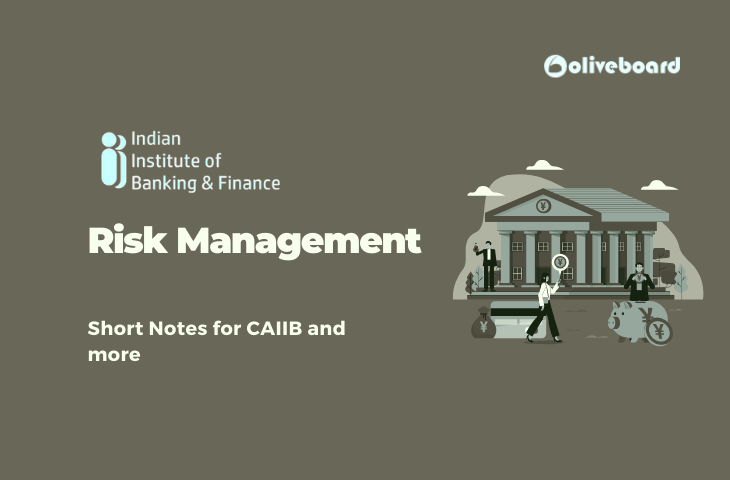In recent years, organizations in all sectors of the economy have emphasized Risk Management as a key to achieving their goals while safeguarding the interests of their stakeholders. Good Risk Management enables an organization to
- Have elevated confidence in accomplishing the desired outcomes
- Effectively restrict threats to safe levels
- Make informed decisions about accessing new markets
Stakeholders can have more faith in the organization’s corporate governance and ability to deliver with good Risk Management.
What Is Risk Management?
Risk Management is the process of identifying, analyzing, and responding to risk factors that arise during the course of a company’s operations.
Effective Risk Management influences future outcomes by acting proactively instead of reactively. As a result, effective Risk Management has the potential to reduce both the likelihood of a risk occurrence and the impact of that risk.
It is a method for:
- Identifying all relevant risks
- Assessing and ranking those risks
- Addressing risks in order of priority
- Monitoring and reporting on Risk Management
What is a risk?
A risk is an unknown future event that could prevent or delay the achievement of an organization’s or unit’s objectives or goals. No one can estimate the likelihood of risk, as it is uncertain. Not all risks are grave. However, companies must take some level of risk to progress or avoid stagnation.
Why do we need Risk Management?
Risk Management is necessary because it:
- Reduces uncertainty: Risk Management is vital because it equips a company with the necessary tools to identify and manage potential threats. It’s simple to mitigate risk once it’s identified.
- Successful planning: Risk Management also helps a company make sound decisions. Risk assessment and management is the best way for a business to prepare for unforeseen events that may hinder growth. A company’s chances of success increase when it assesses potential threats and develops strategies to address them.
- Reduces expenses and losses: Progressive Risk Management addresses high-priority risks effectively and quickly. Also, management will have the information they need to make informed decisions and keep the business profitable.
- Enhances the value of a brand: Brand image and reputation reflect a company’s values and behaviour. Good Risk Management can effectively handle the brand value by identifying, treating, and monitoring risks.
Furthermore, it is sometimes necessary as a legal obligation depending on the industry or sector. Since the resources are limited, it necessitates a focused approach to Risk Management.
Risk Management: Structures
Risk Management structures not only help identify existing risks but support other risk mitigation systems. A good Risk Management structure takes into account the uncertainties and predicts their impact on a company. They put a choice between accepting and rejecting risk, which depends on the tolerance levels that businesses pre-establish for themselves.
By establishing Risk Management as a disciplined and continuous process for identifying and resolving potential risks, businesses can effectively help different risk mitigation systems. The Risk Management structure includes planning, association, cost control, and budgeting. And, with the proper management, the business is unlikely to encounter many surprises because the focus is on the risks in advance.
Risk Management: Process
RM is a cycle made up of the following steps:
- Risk Identification: Identifies and lists the threats and uncertainties that are associated with the organization’s or unit’s goals. It divides the risk into its cause and potential effects.
- Risk Analysis: This allows for a better understanding of what will happen, how it will happen, and when it will happen.
- Risk Assessment: Measured in terms of the occurrence probability, risk exposure, and loss on occurrence.
- Risk Resolution Planning: Provides an approach to deal with risk in terms of effective strategies and execution.
- Risk Monitoring: Assists in identifying and measuring the occurrence, impact, and consequences of risk until it gets satisfactorily resolved.
- Risk Mitigation: Assists in the effective implementation of a specific RM plan by addressing the challenges of risk occurrence.
Categories of Risk
Risks can be classified in a variety of ways; the final categories chosen can depend on the circumstances of each organization or unit. The goal is to group risks into standard, meaningful, and actionable groups.
Financial Risks
- Decline in funding
- Failure to protect assets
- Inadequate cash flow management
- Lack of importance for money
- Fraud/theft
- Flawed budgeting
Operational Risks
These risks arise from failed or inappropriate policies, systems, activities, or procedures, such as
- The collapse of an IT system
- Inferior quality of services delivered
- Health & Safety risks
- Lack of succession planning
- A dearth of staff skill levels
- Non-availability of a process to track contractual commitments
Reputational Risks
- The company engages in activities that could endanger the company’s good name by either collaborating with other entities or by employees or members acting in a criminal or unethical manner.
- Ineffective stakeholder relations
Governance and Compliance Risks
- Lack of board oversight
- Lack of formally defined segregation of duties
- Ensuring compliance with funder terms and conditions
- Compliance with applicable legislation, including safeguarding vulnerable individuals, taxation law, data protection, and health and safety law.
Strategic Risks
- Engages in the activity that is inconsistent with its stated goals
- Fails to participate in an activity that would be beneficial to them
Conclusion
We hope that this article on Risk Management has provided you with sufficient information to be able to answer questions on this topic in the CAIIB exam. For the best preparation for the exam, we recommend candidates refer to previous years’ papers, reference books, and online mock series. We wish you all the best!
FAQs:
Risk Management enables a company to consider all the risks that it is exposed to. Risk Management also looks at the relationship between risks and the potential cascading effect on a company’s strategic objectives.
There are various types of Risk Management, including
Strategic Risk Management
Operational Risk Management
Financial Risk Management
Management of reputation risk
Compliance Risk Management
